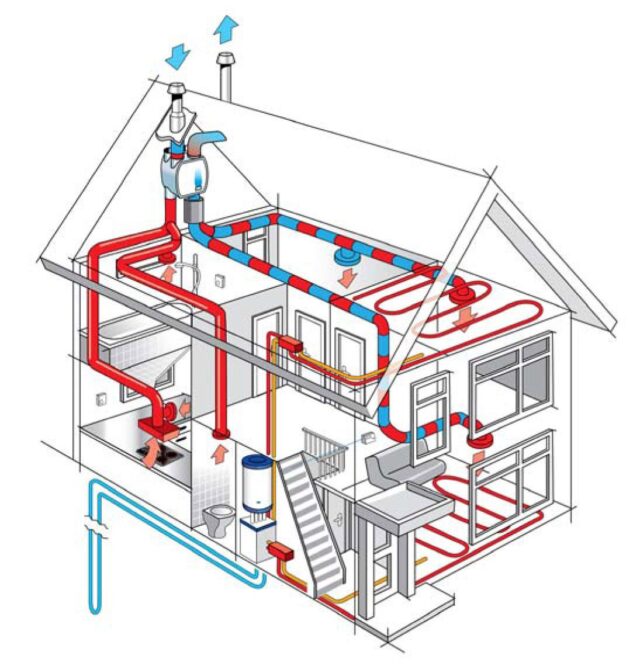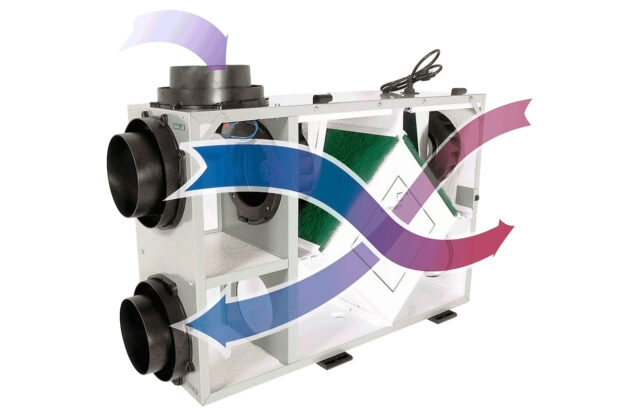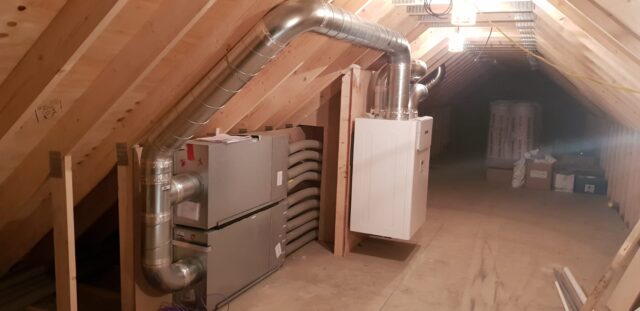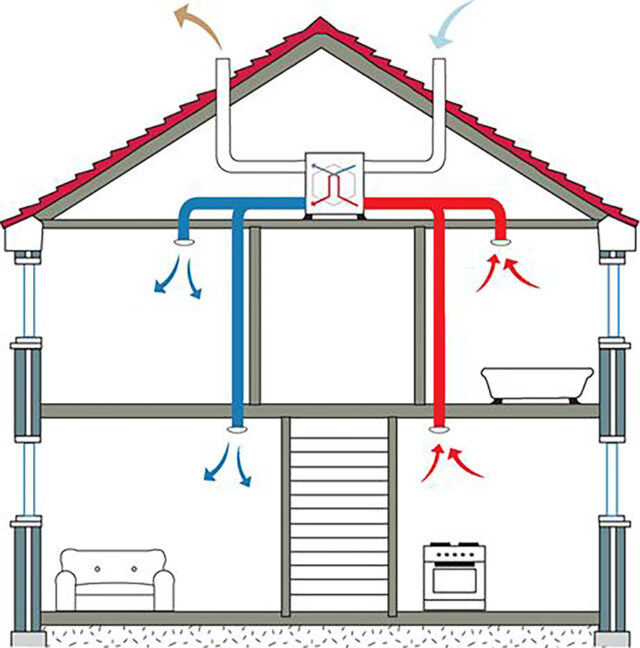
Humans cannot live without oxygen and breathing fresh, clean air is extremely important for one’s health. However, most people spend an increasingly long amount of time indoors, where air quality might not be at its best. Due to changes in construction regulations and increased standards for insulation and air control, many modern homes have poor indoor air quality.
To avoid health risks, structural problems, and increased heating bills, a growing number of people are installing a Heat Recovery System into their home. So here are some things to know about it and why it might be a necessity for your living environment as well.
How does it work?

The system uses a heat recovery unit that is located at the top of the building, preferably in the attic, roof space, or plant room. Rather than just extracting stale air and replacing it with air drawn from the outside, it firstly draws heat from the outgoing air and passes it through the air that is coming in. The two airflows do not mix physically, only exchanging heat in the process.
Each room has ventilation ducts that feed air in and out, leading it to the heat exchanger – the main part of the system which moves indoor air through numerous pipes while drawing in cold air from outside in other ducts. This means that the heat recovery unit works independently from the heating system. You can click here to read more about this.
What are the benefits of installing it?

1Constantly provides the best indoor air quality
The ventilation unit continuously supplies fresh and clean are throughout the entire house all day long. It eliminates air pollution build-up, bad odors, and can be great for people with allergies since pollen filters are also available.
2It is energy and cost-efficient
Buildings that have a great heat recovery ventilation system can preserve up to 30% of heated energy. It does not use a lot of electricity since it operates at a low rate, meaning you can reduce your heating bills and decrease energy requirements with the help of this system.
3 Eliminates condensation and mold
All water vapor is eliminated as it is produced, so there is no condensation or humidity which also helps with the preservation of the building’s fabric. It also prevents mold, dampness, rot, and fungus and keeps dust and mites in check.
4 Offers Comfort
It provides a good and comfortable indoor climate regardless of the weather outside, eliminates drafts, and lessens noise as well, creating a peaceful environment and ensuring undisturbed sleep.
5Has great controllability

Most systems can be controlled by the user and offer a controlled airflow path for the entire home. Some systems even include a monitoring function which might be useful for keeping track of the air quality and humidity in your home.
Where it works best?
For maximum efficiency, houses or office complexes require full insulation and air-tightness. This means they are often not suitable for older houses because they tend to lose more heat. However, older structures can still utilize the system, although with certain limitations.
Conclusion
These ventilation systems might become a part of building regulations very soon, but aside for following construction laws, they are also beneficial for your health and wallet. Improve the air quality of your home, conserve heat that would otherwise be wasted, and decrease your overall impact on the environment by installing a Heat Recovery System in your home as soon as possible.







